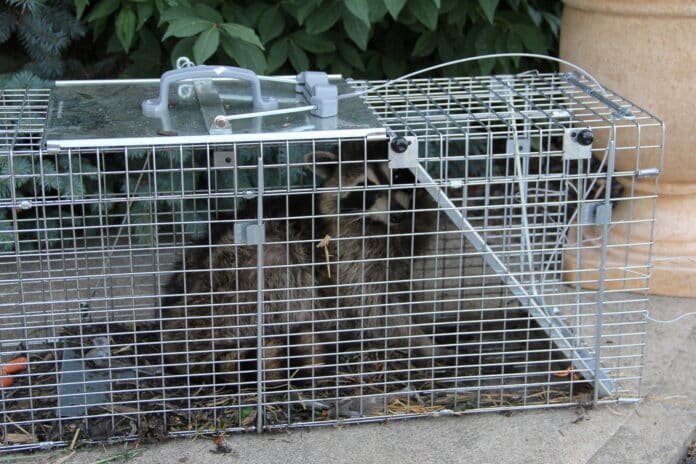I’ve been getting calls and emails from some of our neighbors recently. Folks from Springhill to Weeki Wachee worked up about nuisance wildlife. I’ve been trying to help out as many as I can, but more often than not, it’s a simple trapping solution—something anybody can do.
But before you start trapping, be sure you know what you will do with the trapped animal. Regulations regarding the release of wild animals from traps are strict, so wait to set your traps until you have a workable plan for how and where you will release any animals you catch.
Wire cage traps, frequently sold under brand names such as Tomahawk or Havahart, are available in different sizes, making them great for catching various critters. These wire mesh traps allow you to safely and easily release trapped animals elsewhere. The trap sizes range from those suitable for rodents to those suitable for dogs or coyotes. The size of a trap is a more important consideration than its brand.
Medium-sized traps are appropriate for many of the mid-sized mammals that regularly cause problems in residential settings, such as opossums, raccoons or feral cats.
Always place the bait for a wire cage trap on or behind the trigger mechanism to encourage animals to step inside the cage. A good tip to note is to screen the back portion of the trap where the bait is placed. That prevents animals from reaching through the side of the trap to pull out the bait. Always place traps as level as possible to reduce the chances of a captured animal later rolling the trap over when trying to escape.
My favorite trap for coyotes is a steel-leg hold trap. Steel leghold traps can be used only by permit from the Florida Fish and Wildlife Conservation Commission. The Commission only issues the permit to landowners experiencing problems with coyotes. By law, these traps must be checked at least every 24 hours. They do not damage the animal permanently by breaking legs or having them chew off the foot, as the wive’s tale allows. It’s a remarkably effective tool for those super-smart predators not likely to be tricked into entering a cage.
Many household items, like peanut butter, cat food and sardines are attractive to various critters. But once they’re caught, relocating wildlife is discouraged for several reasons. According to Florida law, trapped wildlife can only be released on the same property where it was caught or on a property of at least 40 acres in size within the county of capture where you have obtained written landowner permission. Certain species, such as raccoons, can never be transported and released because of their high potential to harbor rabies. Raccoons may be legally transported outside of city limits only for the purpose of euthanasia. If an animal can be relocated, the trap should be covered with a cloth to reduce stress on the animal and transported quickly to the release location.
I hope this helps, and as always, I’d love to hear from you at [email protected]. God Bless, and good hunting!

